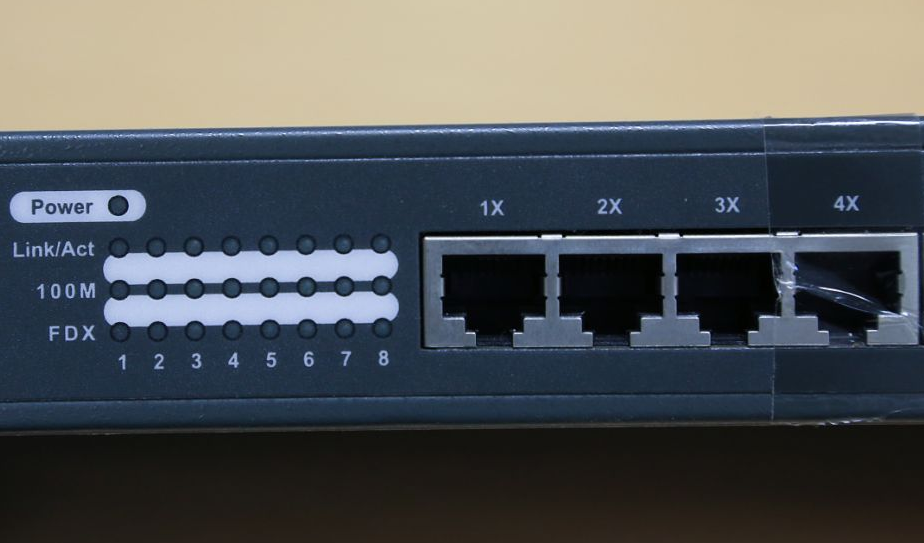Qu'est-ce qu'une passerelle ?
Une passerelle est un dispositif utilisé pour communiquer entre différents réseaux. Elle permet de convertir des données entre différents protocoles, débits ou formats. En d'autres termes, une passerelle est un pont qui permet la communication entre deux ou plusieurs réseaux incompatibles.
Dans les réseaux informatiques, les différents réseaux peuvent utiliser des protocoles, des débits, des formats, etc. différents, de sorte que des passerelles sont nécessaires pour assurer la communication entre les différents réseaux. Par exemple, une entreprise peut utiliser les protocoles Ethernet dans son réseau local interne (LAN), tandis qu'une autre entreprise peut utiliser des protocoles de réseaux hétérogènes (tels que ATM) pour connecter ses appareils internes. Dans ce cas, la communication entre les deux réseaux peut être réalisée en les connectant par l'intermédiaire d'une dispositif de passerelle.
Les passerelles sont souvent utilisées pour relier les communications entre un réseau local (LAN) et un réseau étendu (WAN), ou pour connecter un LAN à Internet. Dans ces scénarios, la passerelle peut acheminer les données vers la destination correcte pour la communication réseau. Comme les passerelles peuvent connecter plusieurs réseaux, elles sont souvent utilisées dans les réseaux à grande échelle pour mettre en œuvre des architectures de réseau complexes.
Qu'est-ce qu'un interrupteur ?
Un commutateur est un dispositif réseau utilisé pour échanger des données au sein d'un réseau local (LAN). Il identifie les différents appareils du réseau et transmet les paquets d'un port à l'autre en fonction des besoins. Au sein d'un réseau local, les commutateurs peuvent assurer une transmission de données rapide et fiable tout en évitant la congestion du réseau.
Le commutateur fonctionne sur la deuxième couche du modèle OSI (Open Systems Interconnection), qui est la couche de liaison de données. Sa fonction principale est de transmettre les paquets de données d'un port à l'autre, en filtrant et en éliminant les paquets de données non valides, ce qui améliore les performances et la fiabilité du réseau.
Le commutateur identifie les différents périphériques du réseau en apprenant les adresses MAC (Media Access Control) et transmet les paquets de données à la bonne destination selon les besoins. Lorsqu'un paquet arrive au commutateur, celui-ci recherche l'adresse MAC de destination et le transmet au port approprié. Si le commutateur ne trouve pas l'adresse MAC de destination, il diffuse le paquet sur tous les ports afin que le périphérique de destination puisse le recevoir.
Dans un réseau local, les commutateurs peuvent connecter plusieurs appareils (tels que des ordinateurs, des serveurs, des imprimantes, etc.) et assurer une communication fiable et à grande vitesse pour ces appareils. Étant donné qu'un commutateur peut réaliser une transmission de données point à point, il est plus efficace et plus fiable qu'un équipement de réseau traditionnel tel qu'un concentrateur. En même temps, le commutateur peut également filtrer les paquets de données pour empêcher les flux de données inutiles d'entrer dans le réseau, améliorant ainsi la sécurité du réseau.

La différence entre une passerelle et un commutateur
Les équipements de réseau font partie intégrante des réseaux de communication modernes, dont les passerelles et les commutateurs sont deux dispositifs courants. Bien que ces deux dispositifs soient utilisés pour la communication réseau, leurs fonctions et leurs rôles sont différents. Cet article examine les différences entre les passerelles et les commutateurs.
Tout d'abord, parlons des commutateurs. Un commutateur est un dispositif utilisé pour échanger des données au sein d'un réseau local (LAN). Il identifie les différents appareils du réseau et transmet les paquets d'un port à l'autre en fonction des besoins. Au sein d'un réseau local, les commutateurs peuvent assurer une transmission de données fiable et à grande vitesse tout en évitant l'encombrement du réseau. En outre, les commutateurs peuvent filtrer les paquets afin d'empêcher le trafic inutile d'entrer dans le réseau.
Cependant, une passerelle est un dispositif qui communique entre différents réseaux. Elle permet de convertir des données entre différents protocoles, débits ou formats. En d'autres termes, une passerelle est un pont qui permet la communication entre deux ou plusieurs réseaux incompatibles. Par exemple, elle peut relier différents réseaux locaux ou connecter un réseau local à l'internet.
Si l'on compare ces deux dispositifs, les commutateurs sont davantage axés sur les communications internes au réseau, tandis que les passerelles concernent les communications entre différents réseaux. En outre, les commutateurs sont généralement utilisés dans les réseaux à petite échelle, tandis que les passerelles conviennent mieux aux réseaux à grande échelle.
En général, les commutateurs et les passerelles sont des dispositifs importants pour les communications réseau. Leurs fonctions et leurs rôles varient, mais ils sont tous des outils nécessaires pour garantir des communications réseau fiables et efficaces. Si vous envisagez de construire une architecture de réseau, il est important de comprendre les commutateurs et les passerelles.


